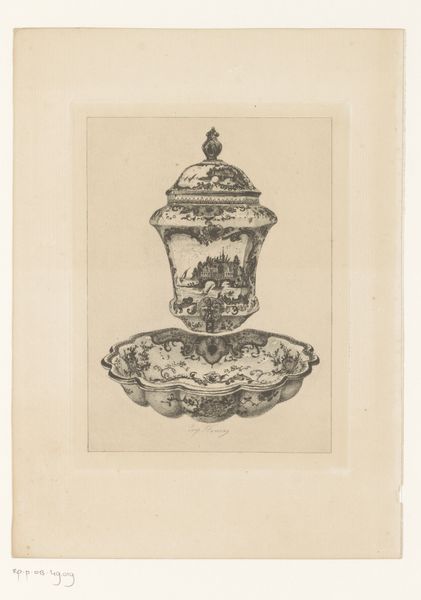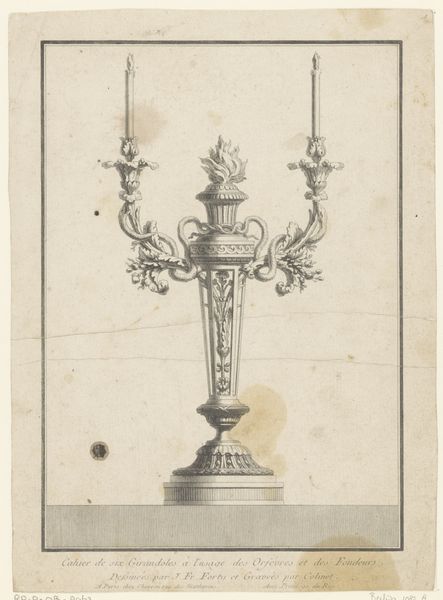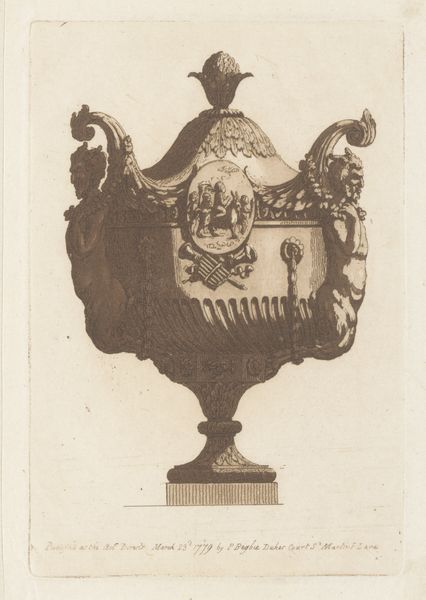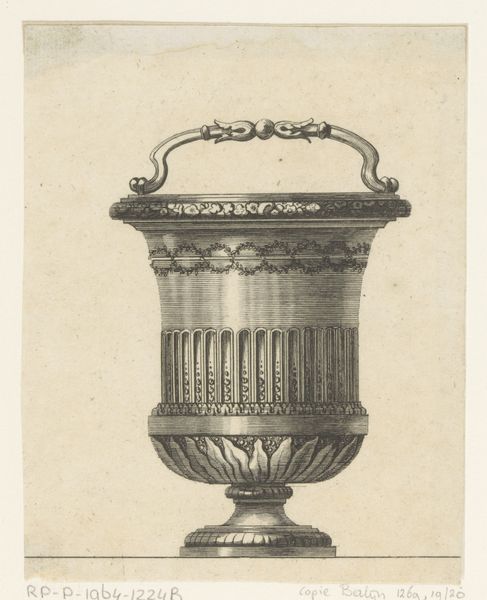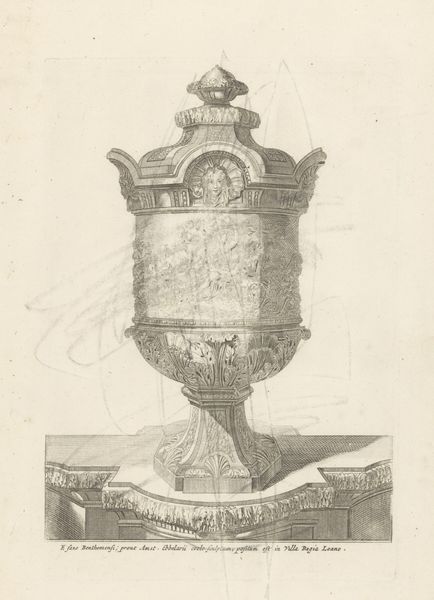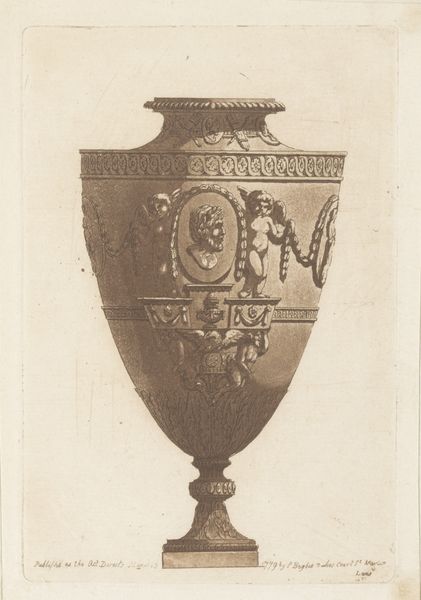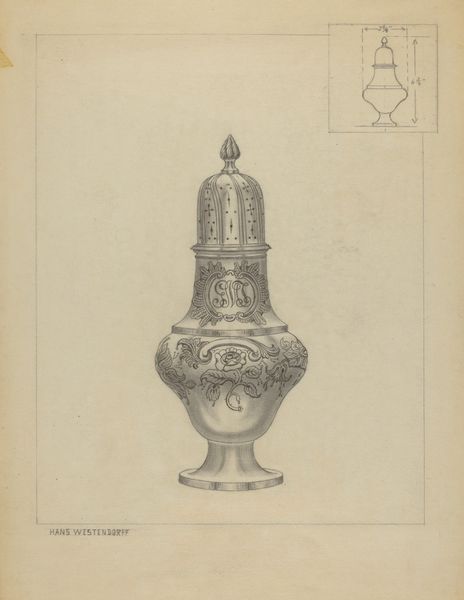
print, engraving
#
neoclacissism
# print
#
old engraving style
#
form
#
line
#
decorative-art
#
engraving
Dimensions: height 242 mm, width 180 mm
Copyright: Rijks Museum: Open Domain
Editor: This is "Vaas op Voetstuk met Gezicht," a print, an engraving to be precise, made anonymously sometime between 1744 and 1788. It feels very symmetrical, very posed... almost like a stage set. What strikes you about the formal qualities of this piece? Curator: The overwhelming element is undoubtedly the line. Observe the sheer density of etched lines defining every contour, creating subtle tonal gradations. Consider, too, the interplay between positive and negative space – how the artist uses hatching to create areas of shadow, thereby articulating the three-dimensional form of the vase and pedestal. Editor: So, you’re drawn to the contrast created by the lines? Curator: Precisely. Note also how the lines are deployed to mimic textures. The smoothness of the vase contrasts sharply with the feathery details of the birds and the intricate carvings of the surrounding objects. And what about the verticality of the central form countered by the horizontal emphasis of the pedestal? This juxtaposition creates visual tension, wouldn't you agree? Editor: Definitely. I see how that tension draws the eye upward. I hadn’t really thought about the negative space contributing to the sculpture. Curator: Formal analysis prompts us to consider how these purely visual elements create meaning and impact. Disregarding historical context, how does the structure, the line and the composition alone, make you feel about the piece? Editor: It seems… calculated. Purposeful in every stroke. Before, I didn’t know where to begin analyzing, but it’s a more approachable artwork once you know how to look at it, I guess! Curator: Indeed! Sometimes, the most fruitful journeys start with a single line.
Comments
No comments
Be the first to comment and join the conversation on the ultimate creative platform.


